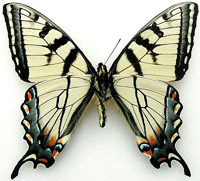Lepidoptera Survey, International

The Taxonomic Report of the International Lepidoptera Survey
Date of this Version
12-15-2000
Document Type
Article
Citation
Taxonomic Report of the International Lepidoptera Survey (December 15, 2000) 2(5): 1-19
Also available at https://lepsurvey.carolinanature.com/ttr/ttr-2-5.pdf
Abstract
The biology and life history of Celastrina neglectamajor is described. This lycaenid butterfly was first described from West Virginia, United States by 19th century lepidopterist, William H. Edwards, as a redescription of Lycaena pseudargiolus (Boisduval & Le Conte). Edwards provided evidence of its unique late spring flight, Appalachian affinity, and larval host Cimicifuga racemosa (Ranunculaceae). Edwards and subsequent authors, most notably Samuel Scudder of New England, treated it as an infrasubspecific form of the common eastern Celastrina ladon. In 1908 Tutt applied the form name neglectamajor, describing it from one of Edwards’ 1884 figures. For nearly a century, confusion persisted over its precise taxonomic status as evidenced by subsequent works which questioned its rank, listed improper synonymies, or provided incorrect host plant reference. Opler and Krizek elevated neglectamajor to species rank in their 1984 eastern North America work, but debate over its rank nevertheless continued in the literature. A definitive work was needed to resolve this problem. We present the results of our long-term study, begun in 1983, that confirms neglectamajor as a valid species. The butterfly is sympatric with several members of a Celastrina sibling-species complex in the Appalachian and Ozarkian regions. It shows no field or laboratory evidence of interbreeding. The major differences separating it from its siblings are its adult size, unique host, larval first instars, and allochronic flight period. Lectotypes are designated from the Edwards collection at the Carnegie Museum (Pittsburgh, Pennsylvania, United States) for Celastrina argiolus pseudargiolus f. neglecta-major Tutt and Celastrina neglectamajor Tutt.


Comments
Copyright 2000, International Lepidoptera Survey. Open access material
License: Creative Commons Attribution-ShareAlike-NonCommercial 4.0 International) (CC BY-SA-NC 4.0 International)